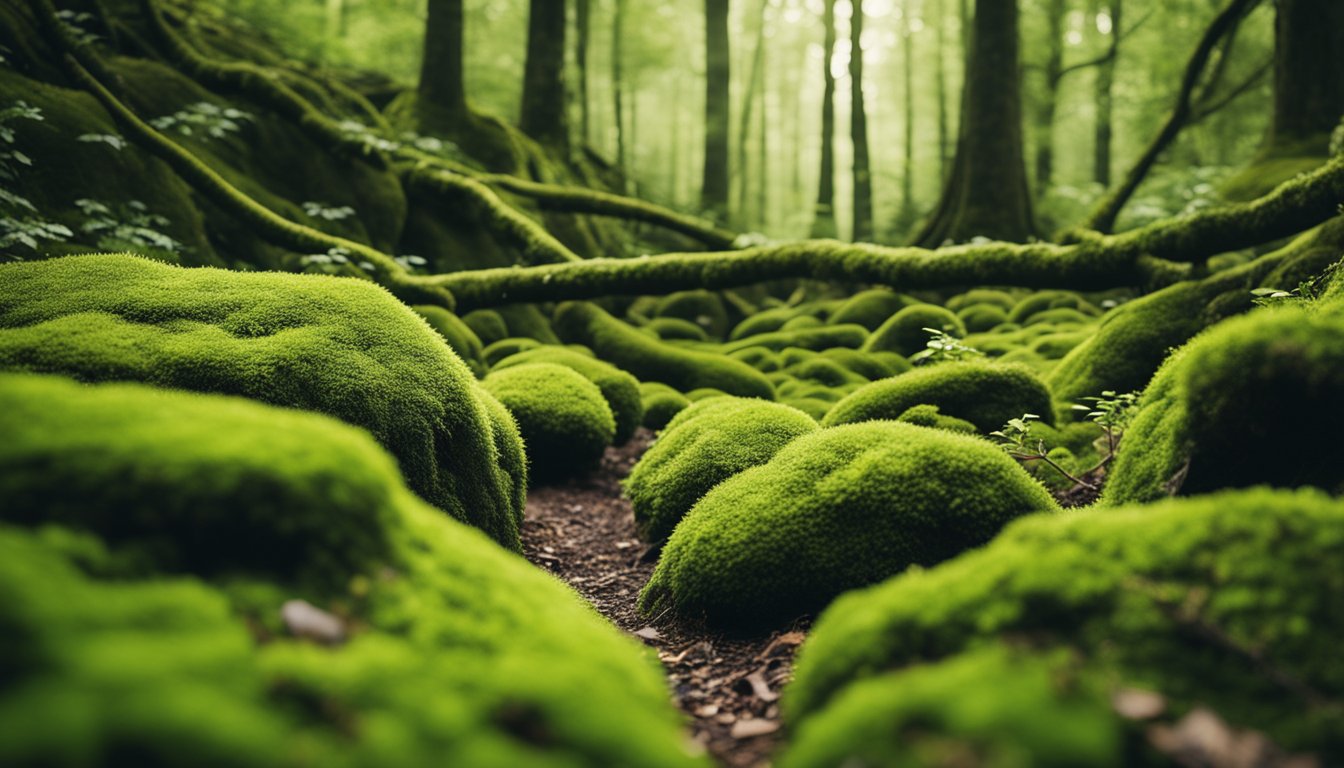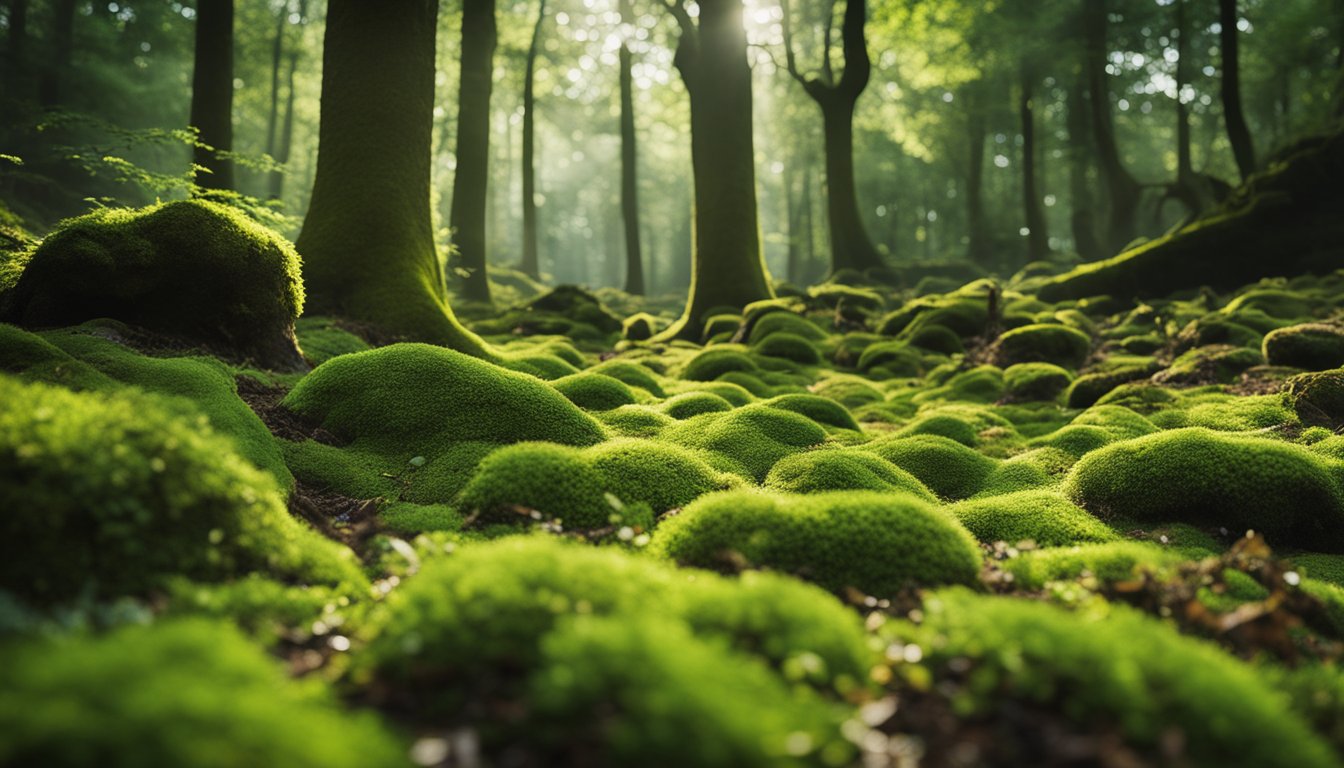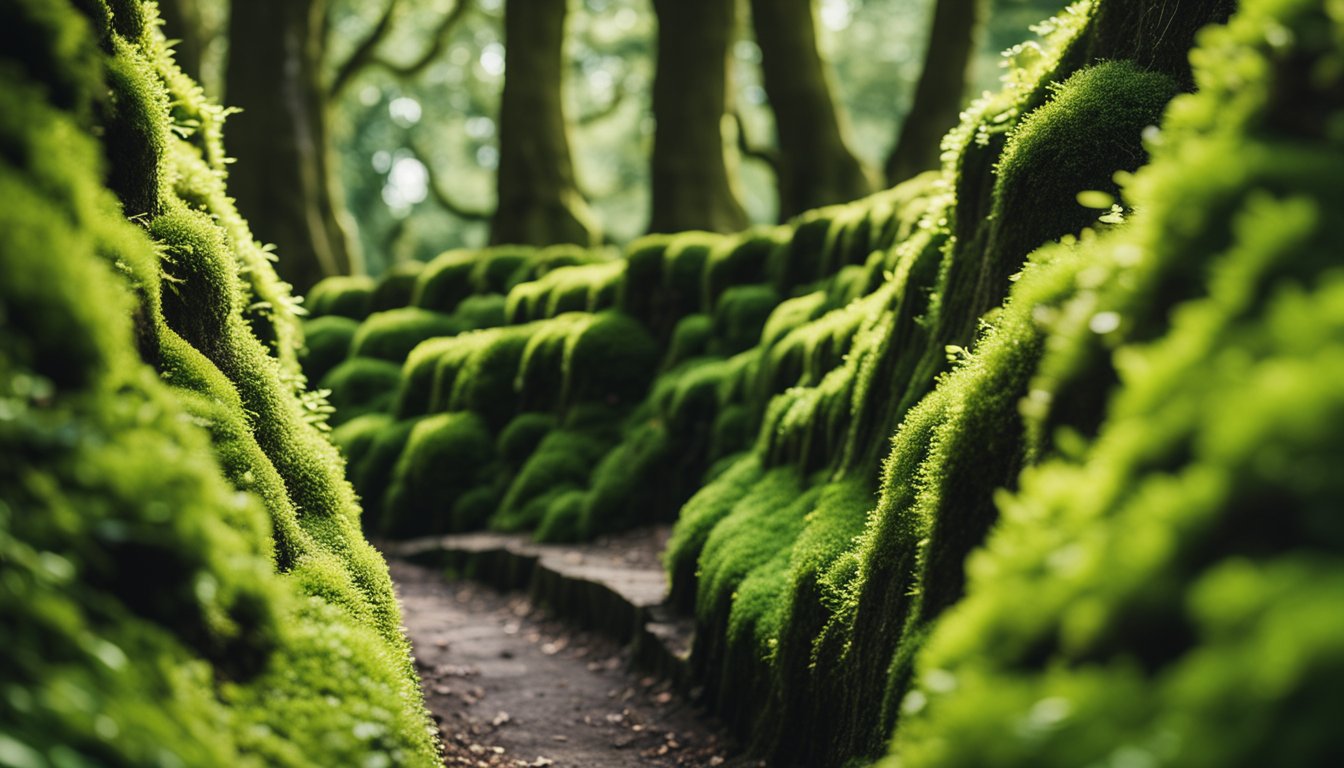Late updated: 01 Apr 2025 15:04
Written by: Emily Thornton
Cultivating Native UK Moss: Eco-Friendly Gardening Tips
Transforming our gardens with native UK moss can elevate both the aesthetic appeal and ecological value of outdoor spaces. Moss thrives in the diverse climate and soil conditions of the UK, offering a sustainable, low-maintenance solution for eco-friendly gardening. By incorporating these plants, we not only enhance biodiversity but also create serene landscapes that require minimal intervention.

Mosses are extraordinary, needing neither extensive soil depth nor frequent care. Their ability to cover surfaces with a rich, green carpet can turn any shady garden area into a lush oasis. This regenerative growth method simplifies our gardening efforts while promoting an environment-friendly approach.
As we explore practical ways to cultivate moss, it becomes vital to understand the essentials of its ecology and habitat requirements. These insights empower us to seamlessly integrate moss into our garden designs, enriching our experiences with nature.
Key Takeaways
- Native UK moss suits the climate and aids eco-friendly gardening.
- Moss is low-maintenance, enhancing garden biodiversity.
- Understanding moss ecology aids successful garden integration.
Understanding Moss Ecology and Habitat Requirements

Mosses are small, fascinating plants that play a crucial part in ecosystems. Their ability to survive in diverse conditions and support environmental health makes them important in UK garden settings.
Significance of Native Moss in UK Ecosystems
Mosses are vital in UK ecosystems due to their role in water regulation and soil formation. These plants absorb moisture efficiently, preventing soil erosion and helping maintain humidity levels. Native mosses are prime agents of biodiversity, offering habitats for small insects and microorganisms.
Research indicates that native moss species are essential in forming nutrient cycles within their environments. By processing air-borne nutrients, they enrich the soil and support surrounding plant life. Their presence means less need for commercial fertilizers.
Native mosses contribute to a balanced ecosystem by providing shelter and sustenance for various wildlife. This dynamic interaction between moss and other organisms ensures a thriving garden ecosystem.
Ideal Habitats for Moss Cultivation
Mosses are adaptable, yet their growth thrives under specific conditions. Typically, they favour shaded, damp environments with indirect sunlight. In the UK, these conditions can often be found in forests, shaded garden corners, and near water features.
For optimal moss cultivation, it's crucial to mimic their natural habitat. Slightly acidic soil with adequate moisture ensures successful growth. Avoiding direct sunlight exposure helps the moss retain moisture, promoting robust development.
To replicate a forest-like setting in our gardens, we need to consider spacing for proper air circulation and the potential for fallen leaves or debris. These elements contribute positively to the moss's growth, maintaining the environment they naturally thrive in.
Practical Guidelines for Moss Cultivation in Gardens
Moss can be an excellent eco-friendly addition to gardens, offering lush greenery even in shady areas. By selecting the right species, creating optimal growth conditions, and ensuring proper care, we can successfully cultivate moss that flourishes and enhances our garden's design and ecological balance.
Selecting the Right Moss Species
Choosing the right moss species is crucial for a thriving moss garden. In the UK, we should consider native species like Pleurozium schreberi or Hypnum cupressiforme, which adapt well to local climates. Native species are better suited to our area, ensuring they won't disrupt the existing ecosystem.
A table can help us evaluate potential choices:
| Moss Type | Preferred Environment | Notable Features |
|---|---|---|
| Pleurozium schreberi | Damp, shaded woodlands | Soft texture |
| Hypnum cupressiforme | Moist, shaded areas | Versatile and hardy |
Understanding the growth requirements and aesthetics of these species will aid in making informed decisions.
Creating the Optimal Environment for Growth
To foster ideal moss growth, we must focus on critical factors such as light, temperature, and moisture. Moss thrives in shaded, cool environments, so it's best to avoid direct sunlight which can dry it out. Maintaining a consistent temperature and adequate moisture by using substrates like rocks or pebbles helps create a stable environment.
Understanding soil pH is also essential; moss typically prefers slightly acidic conditions. Testing the soil and adjusting the pH if necessary ensures that our moss receives the nutrients it needs without fertilisers.
Long-Term Moss Care and Maintenance
Once our moss is established, ongoing care focuses on providing the right conditions for sustained growth. Regular watering is crucial, particularly during dry spells, to prevent the substrate from drying out. Daily misting can maintain humidity levels required for photosynthesis and growth.
Controlling foot traffic and ensuring minimal disturbance helps keep moss intact. Removing debris and regularly inspecting for pests ensures the moss remains healthy. By giving our moss the necessary attention and protection, it will thrive, adding texture and ecological benefits to our garden for years.
Frequently Asked Questions

Cultivating native UK moss offers eco-friendly gardening solutions with minimal maintenance and positive environmental impact. Moss lawns can support biodiversity and transform gardens into sustainable spaces.
How can one cultivate native moss in a British garden for eco-friendliness?
To cultivate moss, select a shaded, damp area. Clear existing vegetation and compact the soil. Apply native moss spores or fragments. Keep the area moist to encourage growth. Moss requires little fertiliser, reducing chemical use.
What are the environmental benefits of a moss lawn compared to traditional grass?
Moss lawns reduce water consumption significantly, as they do not require watering like grass. They also enhance biodiversity by providing habitats for various insects. Since moss doesn't need mowing, it reduces both noise and carbon emissions associated with lawn maintenance.
What species of moss are best suited for gardening purposes in the UK?
Common species include Hypnum cupressiforme, Sphagnum, and Polytrichum. These thrive in varying light conditions and bring distinct textures and colours. Choosing the right species depends on garden conditions, such as sunlight, space, and soil type.
What are the legal considerations regarding the collection of moss in the UK?
Moss collection in the wild may be subject to regulations due to conservation efforts. We recommend sourcing moss responsibly from nurseries or suppliers who collect sustainably. This respects local ecosystems and aligns with efforts to protect biodiversity.
What should be considered when creating an indoor moss garden?
For indoor moss gardens, select a suitable container with drainage. Use acidic soil or potting mix to mimic natural growing conditions. Keep moss in indirect sunlight to avoid drying out. Regular misting helps maintain humidity, which is crucial for growth indoors.
What are the advantages and disadvantages of having a moss lawn?
Moss lawns require less maintenance, water, and no fertilisers, promoting an eco-friendly environment. They thrive in shade and compete minimally with other plants. However, moss lawns may not withstand heavy foot traffic as well as grass, and establishing them may be time-consuming initially.
